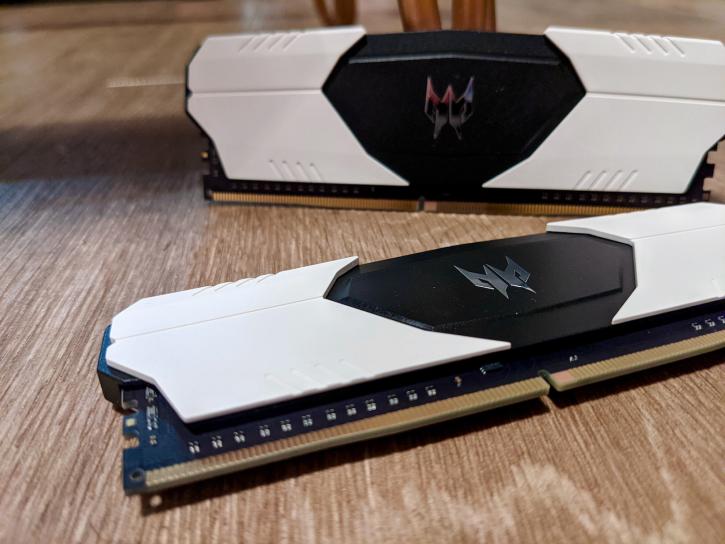System Specification & Tests
System Specification & Tests
Before we move onto the testing, please see below for a brief outline of the test conditions and system specifications that the RAM kits will be used on.
System Specifications
- CPU: AMD Ryzen R5 3600XT (6C/12T).
- CPU Cooler: BeQuiet! Dark Rock 4.
- Motherboard: MSI B450 Mortar.
- GPU: Nvidia RTX 3060Ti (Founder’s Edition).
- PSU: Corsair CX650-M (80+ Bronze).
- Case: Corsair 220T Airflow.
Note that AMD’s Precision Boost Overdrive has been turned on for these tests, thereby effectively allowing the chip to bypass AMD’s stock limits and boost to whatever it feels is feasible within a triangular set of parameters, namely temperature, power draw, and core voltage. The tests on the RAM will be run with both the default XMP profile enabled (see the introduction for a run down on the XMP specifications for both kits), and then with a manual overclock in place where I try to extract additional performance from both products.
The tests will be run against 4 different games and numerous application benchmarks, each of which will get their own dedicated test page. First, however, we will cover my attempts at using the XMP profiles of both kits (in the first instance) and then manually overclocking the DIMMs to see if extracting any further performance is possible.
XMP & Manual Overclocking
Whilst often forgotten by new PC builders, the act of turning on XMP is, thankfully, a very easy affair. Simply go into your UEFI/BIOS, enable the ‘Advanced’ mode, then locate the XMP setting, and that’s it. It’s also important to disclose that enabling XMP on any system is, technically, overclocking. You are, therefore, running the system beyond the manufacturer’s rated specification.
Sometimes, RAM kits will have two XMP profiles. One is a slower profile with looser timings, with the other being the ‘box advertised’ profile. In the case of the Talos kit, this is 3,600Mhz (CL)18-20-20-42. For the Acer Apollo kit, this is 3,600Mhz (CL)14-15-15-35. Having turned on XMP, simply save changes and exit your BIOS. The system will reboot (sometimes more than once) and then – if all is well – you will boot back into Windows. It is important to note that XMP profiles are not guaranteed to work, and your system may refuse to boot. If it does boot, it is important to carry out stability tests to ensure the RAM is working correctly.
Without any surprises, the Talos kit (with its less aggressive XMP settings) booted the first time. I utilized CPU-Z to verify that my memory was running at 3,600Mhz and at the specified timings (listed above). Given that modern Ryzen chips from the Zen 2 era onwards have been significantly easier to run with higher speed memory, I had zero doubts that XMP for the Talos kit would work.


